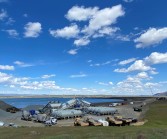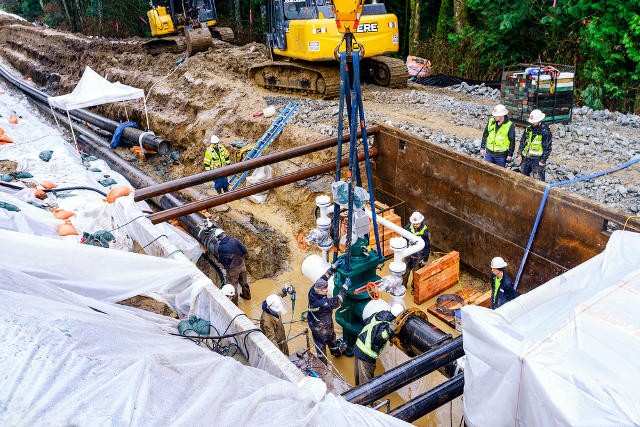BELLINGHAM - It may be almost eight years behind schedule, but it is finally done: Port of Bellingham commissioners have given final approval to a master plan and other development regulations for the central waterfront.
At their Tuesday, Dec. 3, meeting, the three port commissioners voted unanimously to approve waterfront documents that got City Council approval on a 6-1 vote Monday.
The approvals by the port and city could clear the way for actual new construction in the next few years, starting with the 11-acre area in and around the Granary Building. Port Executive Director Rob Fix has been reviewing proposals for that site submitted by would-be master developers.
Among other things, the new waterfront land-use regulations provide for commercial, residential and office development of land that had previously been zoned for heavy industrial use, as the former home of the Georgia-Pacific Corp. pulp and tissue mill. The new plan also keeps significant acreage in place for industrial uses, and envisions new public access points for recreation.
The plans affect 237 waterfront acres that extend around the bay from the I&J Waterway next to the Bellwether development, all the way to a large new park site atop a former city dump off the southern end of Cornwall Avenue.
In 2005, a few months after the port took over G-P's property, port and city officials said they thought the new master plan could be ready for final approval by early 2006.
In 2007, they pushed the completion estimate back to summer 2008.
In the fall of 2008, port commissioners announced they were ready to drop waterfront redevelopment plans, after their relationship with then-mayor Dan Pike broke down.
At Tuesday's meeting, Commissioner Scott Walker said he once expected to be walking down the Commercial Street Green to the water's edge, watching the sunset and eating an ice cream cone, by 2008.
"We've been very close to failure on this," Walker said after the vote was taken. "It's been resurrected and brought back to life. ... At the very beginning of this, it was euphoric. I had no idea what this was going to be like."
Commissioner Jim Jorgensen tried to console critics who said the plans don't do enough to enhance wildlife habitat and guarantee higher-wage jobs. Jorgensen said port commissioners share those goals and will keep them in sight as waterfront development gets underway.
"It's not hard and fast and cut in stone, and we all need to remember that," Jorgensen said. "It's flexible."
Commissioner Mike McAuley said the same. He argued that while waterfront plans may have shortcomings, those shortcomings can be worked out in the years ahead, and further delay would be a mistake.
"I probably have more in common with them (critics) than they might believe I do," McAuley said. "Sometimes better gets in the way of good. There's a whole lot I really don't like about this plan."
Wendy Harris, a persistent critic of waterfront cleanup and development plans, spoke up once more at the public comment session at the start of the meeting. She argued that intense development on the edge of the bay was certain to harm the ecosystem.
"Our ability to promote commerce depends on an ecologically healthy bay," Harris told commissioners. "I don't understand why we're promoting a plan that will further degrade Bellingham Bay. ... We know that shoreline development is in conflict with environmental health."
Harris said the plans should allow waterfront-dependent marine industries, but little or nothing else.
"There's no reason to have non-water-related uses on the shoreline," Harris said. "We don't need the residences, we don't need the condos, we don't need the restaurants. Take all that stuff away."
Mike Stoner, the port's environmental director, replied that the redeveloped waterfront will be far more environmentally healthy than it is today.
"It's habitat that has been really hard-used," Stoner said. "It has been the focal point of industrial activity for 100 years. ... I think we have a package right now that is really based on restoring degraded shorelines."




